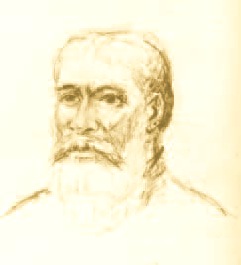TE Kooti Rikirangi Te Turuki was the founder of the Ringatū Church. To his followers Te Kooti was a prophet, a visionary and a leader.
Ringatū, meaning the “Upraised Hand” — in reference to the practice by Te Kooti and his followers of raising their right hand after prayers — was born of a mixture of Old Testament beliefs and Māori custom. Ringatū followers identified themselves with the Israelites escaping from the Pharaohs and returning to their promised land.
Ringatū is still practised among many Māori communities in the Gisborne, East Coast, Tūhoe, Whakatāne, Ōpōtiki and Te Whānau-a- panui districts.
Te Kooti was born about 1832 at the settlement of Pā-ō-kahu along the Awapuni flats towards the Waipaoa River mouth. He belonged to the Ngāti Maru, Ngāi Tāwhiri and Ngāti Kaipoho hapū (sub-tribe) of Rongowhakaata.
Although born of a good family, he was not of chiefly rank. In his childhood Te Kooti attended Whakatō School, an Anglican mission school near Manutūke. He was baptised with the name of Te Kooti. His ancestral name was Te Turuki, the name of his uncle. Te Kooti earned a living by trading with settlers and Māori in the Poverty Bay area.
Business was brisk but some locals were somewhat envious of his success. In 1865 the arrival of the Pai Mārire, or Hauhau, religion into Poverty Bay brought with it strife and civil unrest. Many people of Rongowhakaata and Te Aitanga-a-Māhaki converted to the new faith with the aim of defending their land. Te Kooti did not join the Hauhau movement and fought alongside Government forces and progovernment Māori in the siege of Waerenga-a-Hika pā against the Hauhau. However, he was accused of supplying ammunition to Hauhau inside the pā at Waerenga- a-Hika, then arrested but later released due to lack of evidence. In 1866, however, he was re-arrested on spying charges and deported to the Chatham Islands. In 1867, during his confinement on the Chathams, Te Kooti experienced spiritual visions. He drew a strong following among his fellow prisoners who saw him as a spokesman of God and thus saw the beginning of the Ringatū faith.
On July 4, 1868 Te Kooti led an escape of the Chatham Island prisoners (known as the whakarau) — 163 men, 64 women and 71 children — on the Rifleman, a vessel they had seized. Under Te Kooti’s command, the ship left the Chathams and set sail for Gisborne. They landed at Whareongaonga, just south of Gisborne on July 9, whereupon Te Kooti released the crew of the Rifleman, reportedly without harm.
On hearing of Te Kooti’s escape, Captain Reginald Biggs, the army officer who had originally deported Te Kooti to the Chathams and now Resident Magistrate at Gisborne, sent a message ordering Te Kooti and his men to surrender. Te Kooti, who had warned that he would not fight unless attacked himself, declined the offer of surrender. Thereafter fighting ensued and in November 1868, Captain Biggs, along with a number of European and Māori, were killed at Matawhero. A massive £5000 bounty was offered for Te Kooti’s capture.
At the battle of Ngātapa, in January 1869, Te Kooti suffered a major defeat by local militia and their allies. Although Te Kooti and some of his followers escaped, a number of his men — perhaps as many as 120 — were captured and executed.
Te Kooti retreated to the Urewera district and over the next four years fought a series of battles with Government forces, always managing to evade capture. Between 1873 and 1883, after being continually on the run, Te Kooti lived at Te Kuiti in the King Country, where he was protected by the Māori King Tāwhiao.
In 1883 the Government formally pardoned Te Kooti on the condition that he did not return to Gisborne. He lived at Ōtewa, between Kihikihi and Te Kuiti. It was during this period he developed the rituals of the Ringatū Church.
In 1891 the Government gave Te Kooti an area of land at Wainui (near Ōhiwa Harbour), where a marae for the Ringatū Church was subsequently established. There he lived out his days and died on April 17, 1893.

